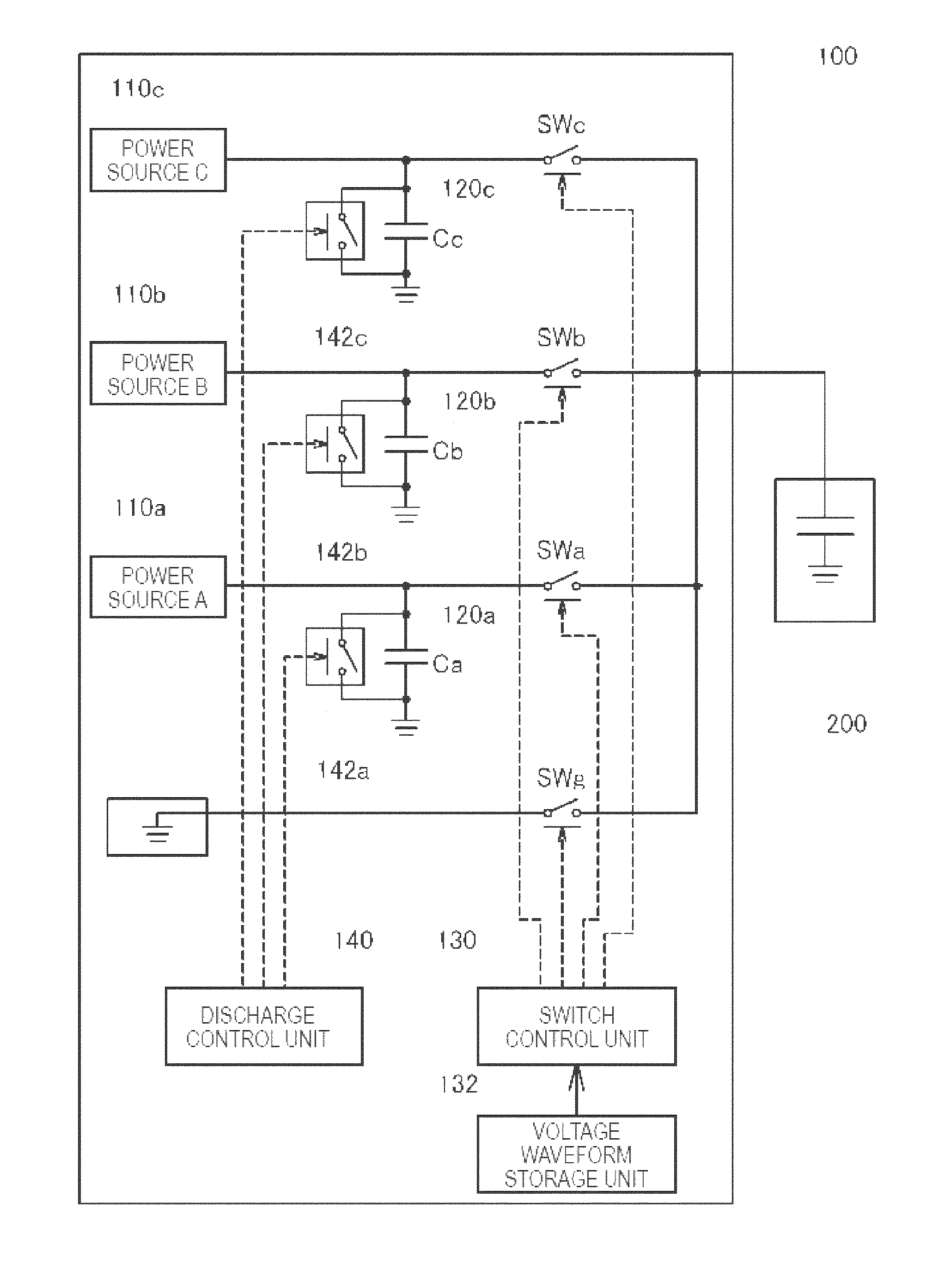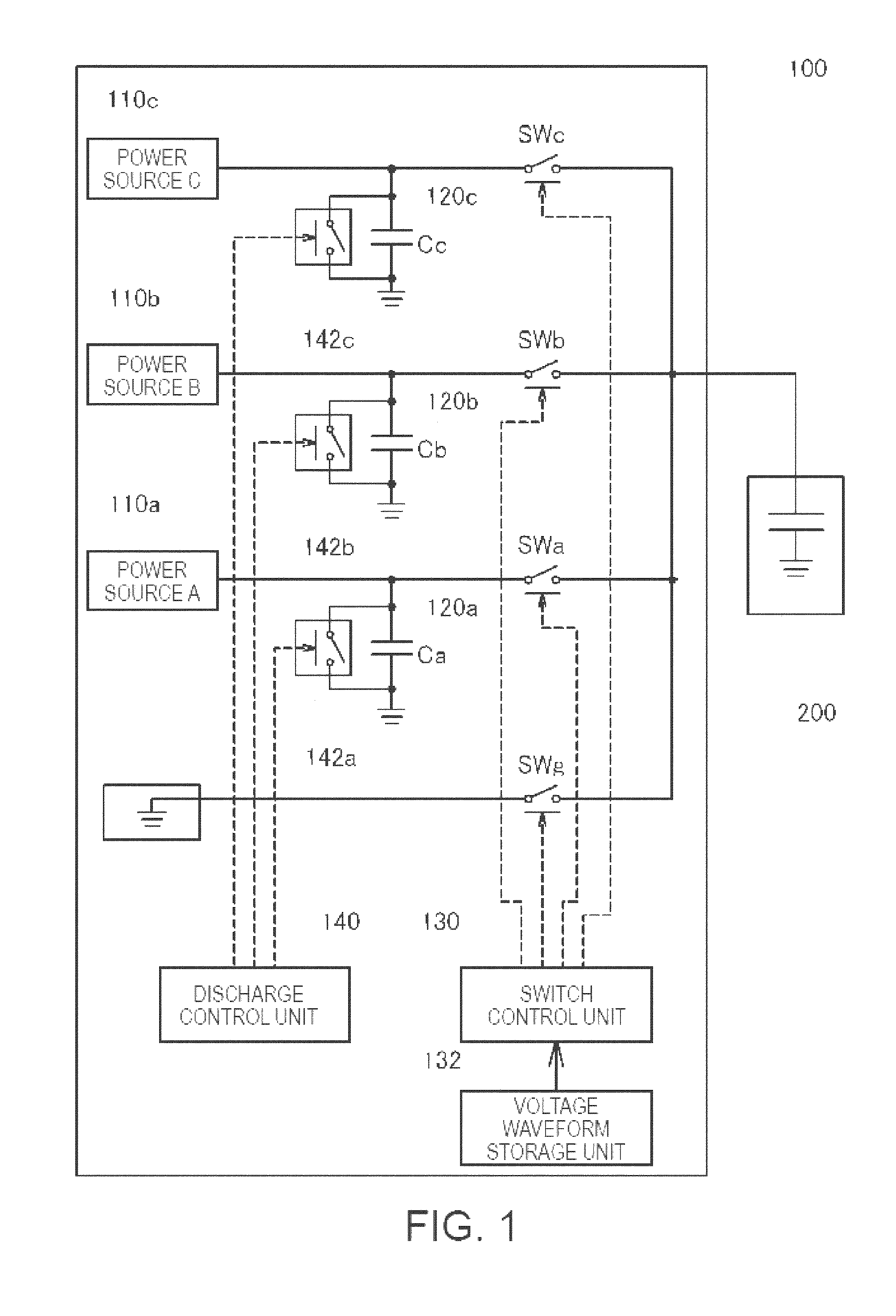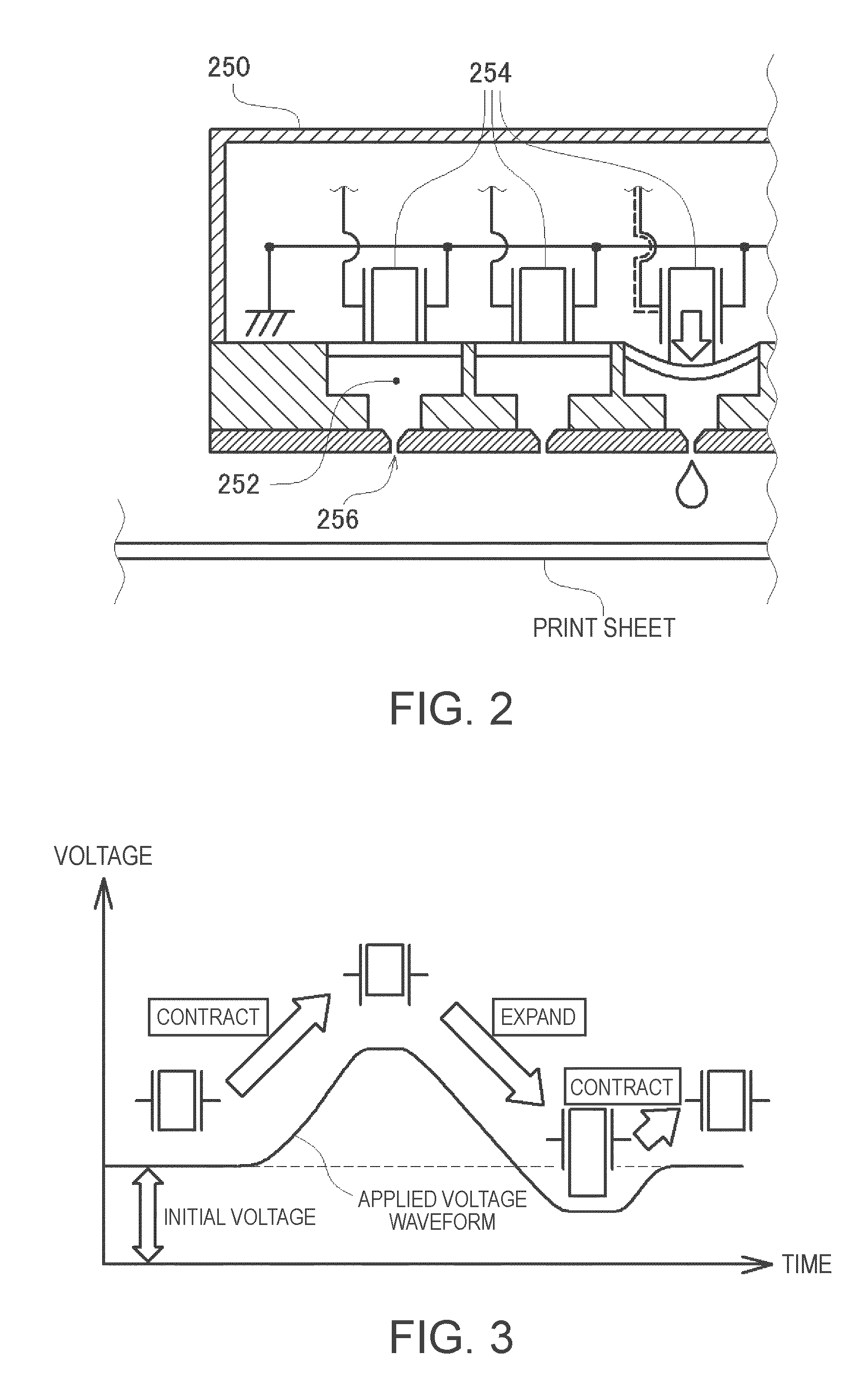Electric load driving circuit
a driving circuit and load technology, applied in the direction of dc source parallel operation, amplifiers, semiconductor devices/discharge tubes, etc., can solve the problems of inability to drive the load the voltage applied to the load cannot be raised to the terminal voltage of the capacitor or higher, and the load cannot be driven properly. to achieve the effect of more efficient electric load driving
- Summary
- Abstract
- Description
- Claims
- Application Information
AI Technical Summary
Benefits of technology
Problems solved by technology
Method used
Image
Examples
first modified embodiment
C-1. First Modified Embodiment
[0059]In the above embodiment, it is assumed that when the electric load 200 with a low applied voltage is connected to a capacitor, the discharge circuit 142 of that capacitor is made to operate. However, the timing of making the discharge circuit 142 to operate and discharge electric charges is not limited to the above timing.
[0060]For example, if a slower voltage waveform is applied, as shown in FIG. 7A, the electric load 200 may be connected to one capacitor for a long period of time. In such a case, the discharge circuit 142 may be made to operate only during a partial period of the period when the capacitor is connected to the electric load 200. In this case, a large quantity of electric charges flows into the capacitor for a while after the switch is changed over and the electric load 200 is connected to the capacitor. Therefore, the discharge circuit 142 may be made to operate during this period alone.
[0061]Moreover, the discharge circuit 142 ma...
second modified embodiment
C-2. Second Modified Embodiment
[0063]In the above embodiment and the first modified embodiment, it is assumed that the voltage generated by each power source has a substantially equal voltage difference. However, the voltage generated by each power source need not necessarily be set with an equal voltage difference. Moreover, the generated voltage may be changeable.
[0064]FIG. 8A and FIG. 8B show an example of driving the electric load 200 by using a voltage waveform in which the voltage difference between the voltage Vb generated by the power source 110b (power source B shown in FIG. 1) and the voltage Vc generated by the power source 110c (power source C shown in FIG. 1) is set to be broader than the other voltage differences between power sources (for example, the voltage difference between Va and Vb, or the voltage difference between GND and Va). For example, in the ink jet printer, ink that is temporarily sucked into the ink chamber 252 is pushed out and ink droplets are ejected...
third modified embodiment
C-3. Third Modified Embodiment
[0067]In the above embodiment and first and second modified embodiments, it is assumed that any of the discharge circuits 142 discharges electric charges accumulated in the capacitor 120 to the ground. However, electric charges may be discharged to another capacitor having a lower terminal voltage, instead of the ground.
[0068]FIG. 9 is an explanatory view showing an electric load driving circuit according to a third modified embodiment in which excessive electric charges accumulated in a capacitor are discharged to another capacitor. In the example shown in FIG. 9, if excessive electric charges are accumulated in the capacitor 120c, the electric charges can be discharged to the capacitor 120b via the discharge circuit 142c. If excessive electric charges are accumulated in the capacitor 120b, the electric charges can be discharged to the capacitor 120a via the discharge circuit 142b. Each of the discharge circuits 142a, 142b and 142c is provided with a s...
PUM
 Login to View More
Login to View More Abstract
Description
Claims
Application Information
 Login to View More
Login to View More - R&D
- Intellectual Property
- Life Sciences
- Materials
- Tech Scout
- Unparalleled Data Quality
- Higher Quality Content
- 60% Fewer Hallucinations
Browse by: Latest US Patents, China's latest patents, Technical Efficacy Thesaurus, Application Domain, Technology Topic, Popular Technical Reports.
© 2025 PatSnap. All rights reserved.Legal|Privacy policy|Modern Slavery Act Transparency Statement|Sitemap|About US| Contact US: help@patsnap.com



